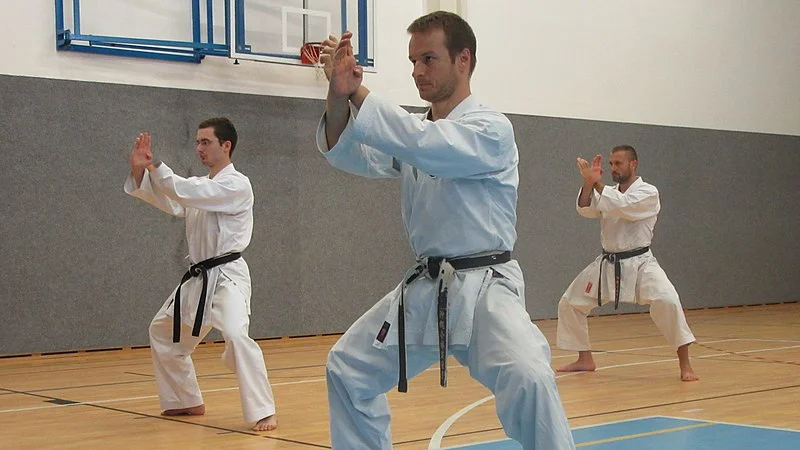Kobudo is an ancient martial arts form practiced in Japan and Okinawa. Combining hand and weapon techniques has been integral to Japanese culture for centuries. It is a unique form of self-defense and an art form that many martial arts practitioners appreciate. It is a highly effective martial art that is both practical and physically demanding.
This blog will explore Kobudo’s history, techniques, and philosophy. We will discuss the importance of training, the benefits of Kobudo, and some of the critical methods of this martial art form. So if you are interested in learning more about Kobudo or if you are a practitioner looking to hone your skills, this blog is perfect for you. Let’s get started.
Overview of the history of Kobudo martial arts
Kobudo martial art describes the traditional weapons-based martial arts of Okinawa, Japan. It is believed to have originated more than 500 years ago when the people of the Ryukyu Kingdom developed a system of empty-handed combat and an array of weapons to supplement their unarmed techniques.
These weapons include the bo (staff), nunchaku, sai, tonfa, kama, and eku (boat oar). While there is limited evidence of these weapons being used in combat in the past, they have since become popular as an expression of martial arts culture and are widely practiced in various forms today.
Description of Kobudo’s different forms
Kobudo is a martial art that originated in Okinawa, Japan, and is one of the world’s oldest forms of martial arts. It contains various forms, each with its own unique techniques.
- The most basic form is the bo, a long stick for striking and blocking.
- The sai is a metal trident with two prongs at the base, used for defense and disarming opponents.
- The tonfa is a short wooden stick with a handle perpendicular to the main body, used for blocking and striking.
- The kama is a sickle-like weapon with a sharp blade at one end, used for slashing and cutting.
- The nunchaku is a pair of short sticks connected by a chain, used for blocking, striking, and disarming opponents.
- The eku is a long, curved oar used to strike and block.
Kobudo also includes karate and weapons-based techniques, such as sword and spear fighting. Each form has its history and style, making Kobudo a comprehensive and versatile martial art.
Benefits of regular Kobudo practice
Kobudo is an ancient martial art practiced for centuries and offers many benefits for practitioners. Regular practice of Kobudo can improve physical fitness, coordination, and balance and increase the body’s strength, speed, and flexibility. It is a great way to relieve stress, build mental focus, and even help develop self-confidence and self-discipline.
Doing Kobudo exercises also helps to increase one’s overall physical endurance. Practicing Kobudo also improves one’s general self-defense skills, as the techniques used in the art are designed to be effective against an opponent of any size. Additionally, Kobudo’s philosophy of respect and discipline can help to instill a sense of responsibility and respect in practitioners.
Finally, the sense of community in Kobudo is strong, and practitioners often develop lasting friendships with their fellow students. These benefits make regular Kobudo practice a great way to stay physically active, mentally focused, and social.
Recommended for you:
Essential equipment for Kobudo martial arts
Essential equipment for Kobudo martial arts can vary depending on the practitioner’s preferences and needs.
Generally, the minimum equipment needed to practice Kobudo is a bo (staff), sai (metal prongs), kama (sickle), tonfa (a club with a handle perpendicular to the main shaft), and nunchaku (two sticks connected by a chain or rope). Most practitioners also wear a uniform while they practice.
Besides the basic equipment, there are a few other pieces that can be beneficial to a Kobudo practitioner. These include a chest protector and hand protector to reduce the chance of injury, headgear for protection, and a training knife. The knife can be used for practice and for self-defense.
Lastly, a heavy bag is essential for practicing strikes and kicks. This helps the practitioner build strength and endurance and learn the proper techniques for Kobudo martial arts. All this equipment is necessary for any Kobudo practitioner looking to improve their skills.
Requirements for attaining a Kobudo martial arts certification
Kobudo martial arts certification is an important achievement for practitioners of Kobudo, an ancient Japanese martial art. Requirements for attaining certification vary from school to school but generally involve a combination of time requirements, knowledge and skill tests, and a demonstration of physical proficiency.
To achieve certification, practitioners must have a basic understanding of the Kobudo techniques, forms, and philosophy. Students must demonstrate their ability to execute the techniques with proper form and technique. They must also be able to explain the principles of martial art and the various techniques.
In addition to the knowledge and physical proficiency tests, students must also be able to demonstrate the correct applications of the techniques in different situations.
Finally, they must also demonstrate their ability to defend against opponents in a realistic but controlled environment. Certification is often the culmination of years of hard work and dedication to the martial art and is a mark of great honor and respect among practitioners.
Conclusion
In conclusion, Kobudo martial arts is a unique and powerful form of self-defense passed through centuries of Okinawan culture and tradition. It has various forms, from weapons-based kata to unarmed karate, and provides a tremendous physical and mental workout.
With the right equipment, dedication, and instruction, anyone can learn the basics of Kobudo and build a solid foundation of martial arts knowledge. Earning a Kobudo martial arts certification is an excellent way to demonstrate mastery of the art and show the world that they are actual martial arts practitioners.

